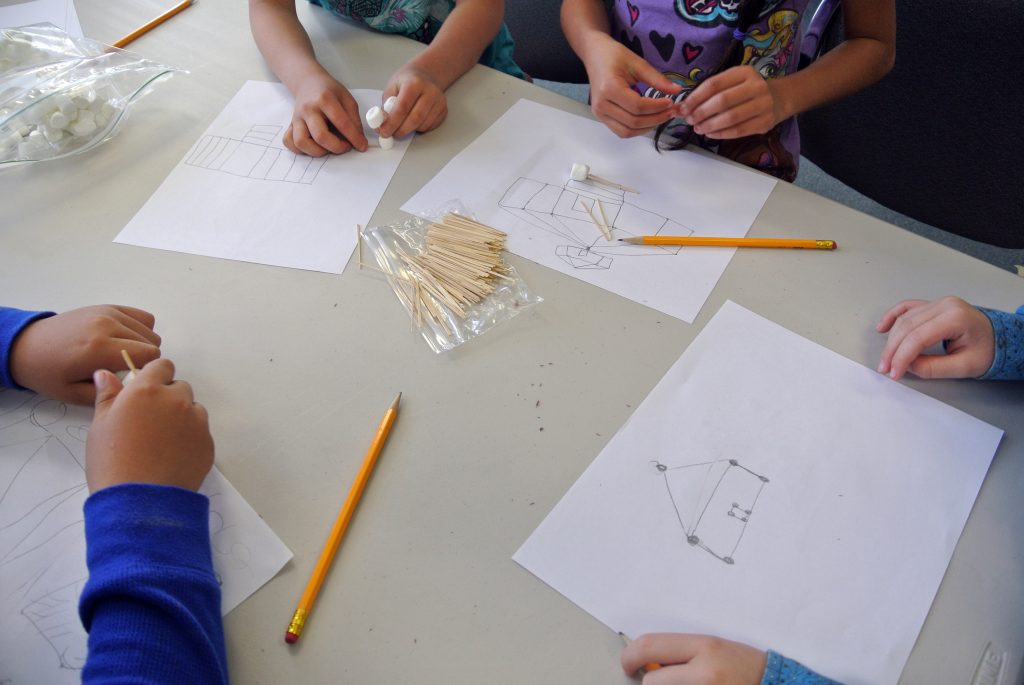 This month we conducted another maker day at Animas Public Schools with about 60 grade K-5 students. In the morning, grade K-2 students made marshmallow structures, created “unbirthday” cards, and participated in digital photo challenges.
This month we conducted another maker day at Animas Public Schools with about 60 grade K-5 students. In the morning, grade K-2 students made marshmallow structures, created “unbirthday” cards, and participated in digital photo challenges.
The marshmallow activity involved building towers with mini-marshmallows and toothpicks. Before beginning, we talked about the design process 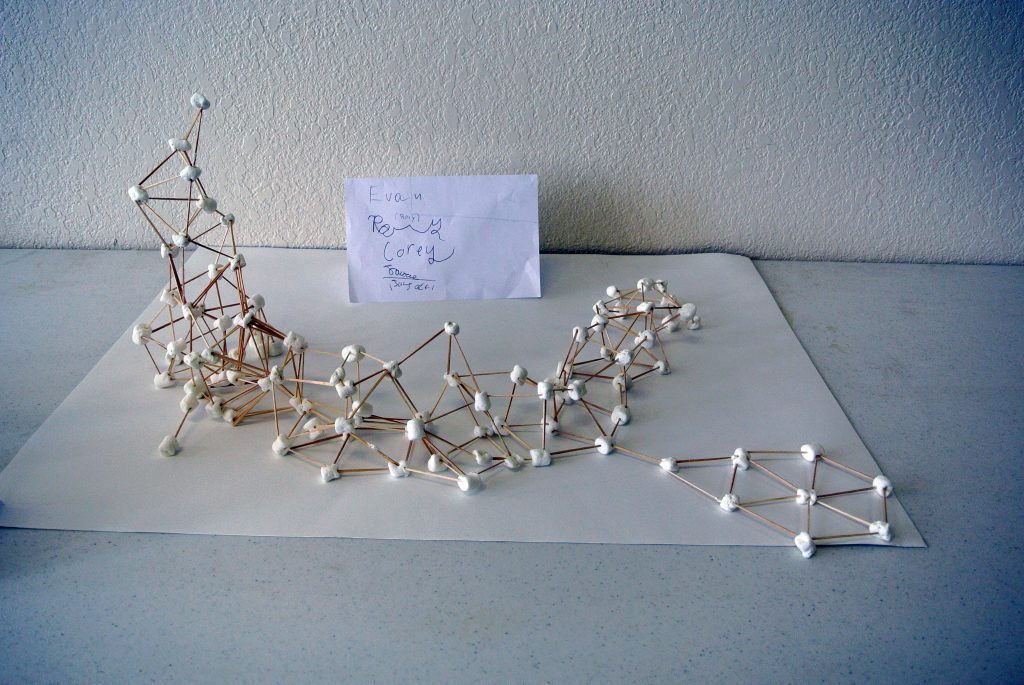 and how real-world engineers begin by planning and designing. We also brainstormed what might make for a good tower (strong base) and different shapes we might make (with triangles being one of the strongest structures).
and how real-world engineers begin by planning and designing. We also brainstormed what might make for a good tower (strong base) and different shapes we might make (with triangles being one of the strongest structures).
Both designing and working in groups while building proved to be good learning processes for students. While some groups followed their designs relatively closely, one student proclaimed “This doesn’t look anything like what we drew!”
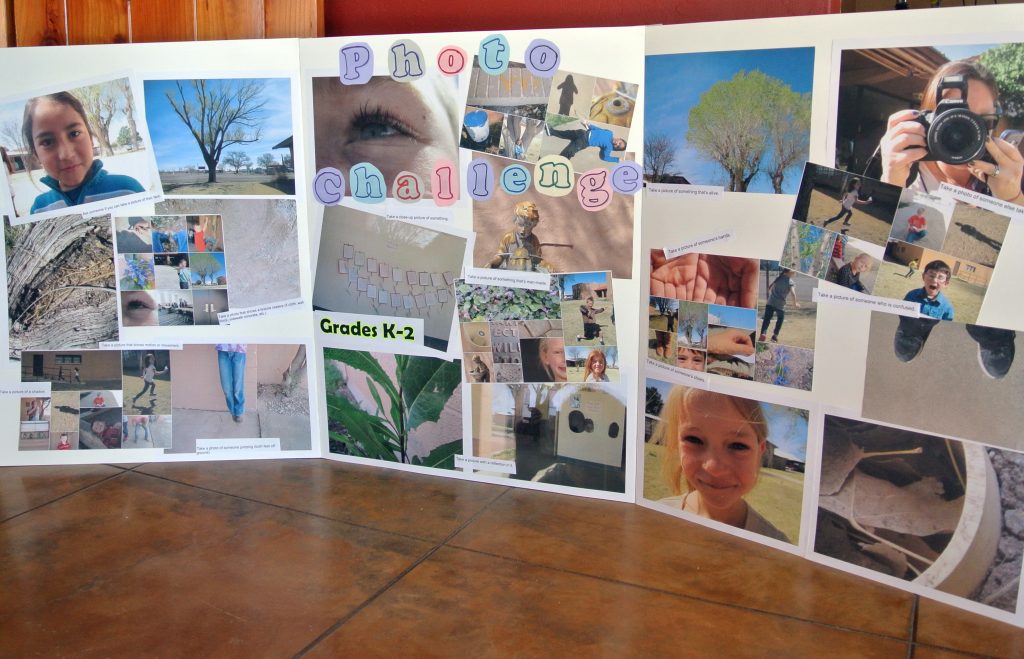 The digital photo challenge is always a favorite, and this group took some amazing photos.
The digital photo challenge is always a favorite, and this group took some amazing photos.
In the afternoon, grade 3-5 students made Rube Goldberg-style contraptions incorporating simple machines.
Again, we emphasized the design process with planning, building, and iterating. Students began by working in small groups to design what they planned to build by drawing it.
Working on a design challenge in a group was also a le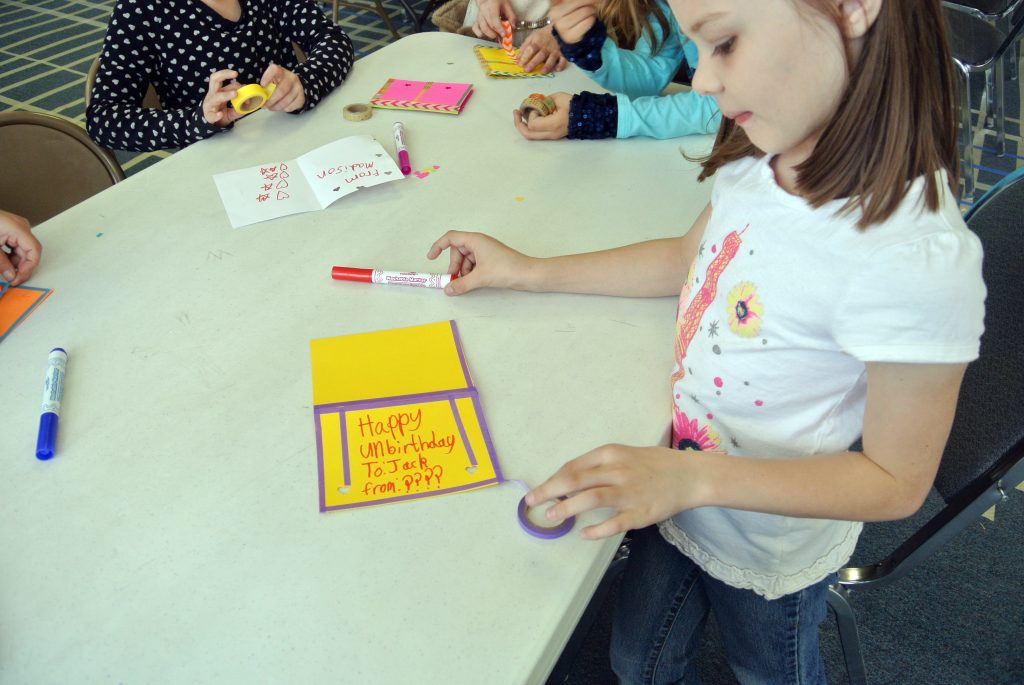 arning experience for these students. Figuring out which person would do which task and how the different parts would fit together were real word tasks which will benefit these students later on. Some groups worked well together, while others didn’t.
arning experience for these students. Figuring out which person would do which task and how the different parts would fit together were real word tasks which will benefit these students later on. Some groups worked well together, while others didn’t.
In the building phase, students were given a set of materials which included a piece of posterboard, Play Doh, tongue depressors, popsicle sticks, dominoes, marbles, a bell, paper cups, cardboard tubes, cardboard, string, pipe cleaners,tape, and glue. With these materials, they were to build a chain reaction style contraption (think Mouse Trap) that incorporated simple machines, such as inclined planes, pulleys, levers, and wheels.
The chain reactions were to start with the drop of a marble with the end goal of ringing a bell. Students could not touch anything in between, and the goal was to have at least five steps in the process.
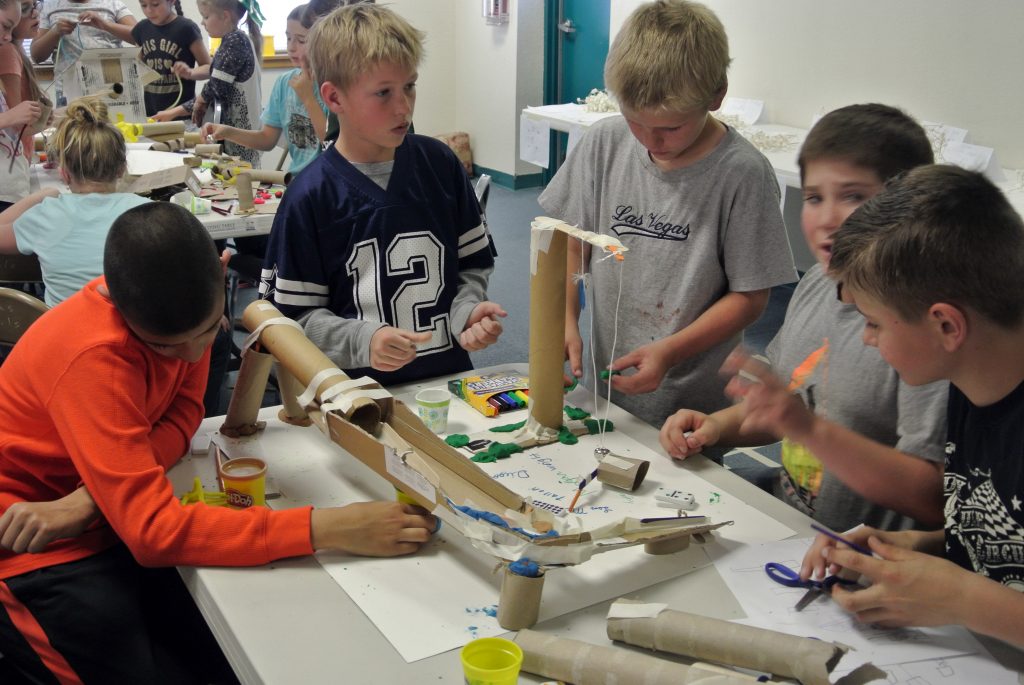 About midway through the process, students were given the opportunity to present their work and to reflect on what they were most proud of, what their biggest challenge was, and what work they still needed to do. Other students gave input and suggestions.
About midway through the process, students were given the opportunity to present their work and to reflect on what they were most proud of, what their biggest challenge was, and what work they still needed to do. Other students gave input and suggestions.
Some of my take-aways from the day:
- Children, even very young ones, are incredibly capable.
- Working with a group of 15 students was much more productive (for them and for us) than with all 30. (For the morning group, a limited number of cameras prompted us to divide into two groups and switch between that and making cards.)
- If I did the contraption activity again, I might rethink it a little and/or provide more examples. Students didn’t entirely understand the chain reaction idea and fitting in simple machines (other than the inclined plane) was a little contrived.
- Don’t use Play Doh on carpet (even if students are working on tables).
- I need more work on managing group dynamics. (We had several groups that couldn’t/wouldn’t work together, even though they chose their own groups. For a few, I ended up just letting them regroup or work alone.)
- The random variations of the day can make a big difference.
- Modeling different kinds of activities like these can be valuable professional development for teachers.
